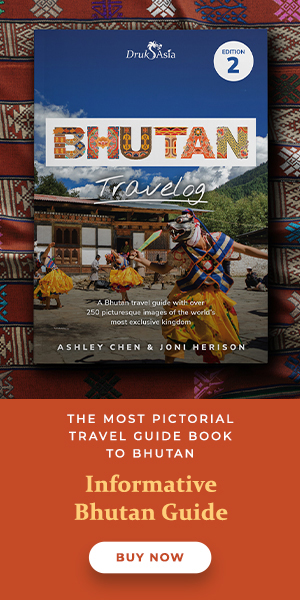BHUTAN
Travelog
Prayer Flags in Bhutan: Meaning Colours and Cultural Significance

Prayer flags are not merely colourful pieces of fabric dancing in the wind; they hold a significant place in the cultural and spiritual fabric of Bhutan. These vibrant banners embody prayers and good wishes, reflecting the deep-seated beliefs of the Bhutanese people. The importance of prayer flags is multi-faceted, encompassing the meanings associated with different colours, the traditional methods used in their creation, and the various types that enhance the stunning Himalayan landscape.

What Are Prayer Flags?
Prayer flags are vibrant pieces of cloth that are traditionally displayed in the stunning mountain landscapes of the Himalayas, especially in areas linked to Buddhism spread, such as Tibet and Bhutan. These flags go beyond mere decorations; they hold profound spiritual meaning and cultural significance for the Himalayan people of the region.
Typically, they feature various mantras and symbols aimed at promoting peace, compassion, and healing energies. Each colour represents one of the five elements, and prayer flags, including Lungta flags and Darchor flags, serve as a tangible expression of faith and a connection to sacred teachings, reflecting centuries of Buddhist practices and traditional printing techniques.
What Is the Significance of Prayer Flags in Bhutan?
In Bhutan, prayer flags are deeply significant to the culture, intricately linked to the country's unique cultural identity and the spiritual beliefs that stem from Buddhism. These sacred flags are commonly used in various ceremonies and festivals, serving as a symbol of the connection between the physical and spiritual realms, often invoking divine intervention.
It is believed that they carry blessings and positive energy on the winds, promoting goodwill, compassion, and happiness among the land and its people.
What Is the Cultural Belief Behind Prayer Flags in Bhutan?

The cultural significance of prayer flags in Bhutan is deeply intertwined with the teachings of Buddhism, including the Buddha, Dharma, and Sangha. These flags are regarded as powerful channels for positive energy and blessings.
These vibrant pieces of fabric not only enhance the landscape but also symbolise hope and goodwill. Each flag is imbued with specific prayers and mantras. Through the gentle breeze, they are believed to carry these sacred messages to the heavens, fostering a sense of peace and harmony for those who behold them.
Historically, this practice holds substantial importance in both spiritual and community contexts, promoting a sense of unity among families and communities.
- In Bhutanese culture, it is common to see these flags strung across hills, mountain passes, and sacred sites.
- The five colours of the prayer flags represent the five elements and the balance of nature.
- Buddhist teachings suggest that by honouring these flags, individuals can contribute to the greater good of society.
As a result, one can truly appreciate the significant impact of these traditions, where the simple act of raising a flag transforms into a collective prayer for well-being and enlightenment.
What Are the Colours of Prayer Flags and Their Meanings?

The colours of prayer flags are not only visually appealing; they also carry distinct meanings deeply rooted in spiritual symbolism and the five elements, reflecting key Buddhist beliefs.
Each colour represents various aspects of life and the universe, and together, they contribute to the overall spiritual energy that these flags are intended to project.
Blue
The colour blue is frequently linked to the sky and the element of space in prayer flags, symbolising peace and tranquillity.
This hue resonates deeply within the themes of Buddhism, representing not only the vastness of the heavens but also the endless possibilities for inner peace and spiritual growth. When one observes blue prayer flags gently fluttering in the wind, it serves as a reminder of the interconnectedness of all beings and the significance of harmony in our lives.
Each flag adorned with blue carries prayers and positive intentions that transcend the physical realm, aiming to uplift the spirits of those who encounter them. These vibrant pieces of fabric embody the essence of Buddhist teachings, encouraging individuals to cultivate compassion and mindfulness.
In many cultures, blue is thought to ward off negative energies, reinforcing the search for tranquillity amidst chaos. The serene hue fosters introspection, inviting practitioners to reflect on their spiritual aspirations.
White
White holds significant meaning in the context of prayer flags, representing purity and wisdom, while embodying clarity of mind and the pursuit of enlightenment.
In numerous Buddhist traditions, this colour symbolises the beginning of a spiritual journey, highlighting the potential for growth and transformation. You will often see white flags fluttering gracefully in the wind, with each movement carrying prayers and hopes for both personal and collective peace. Their presence serves as a gentle reminder of the delicate balance between our physical existence and our spiritual aspirations.
As practitioners hang these flags, they take time to reflect on their intentions, fostering a deeper connection to their spiritual journey. This ritual not only nurtures their personal clarity but also spreads a sense of tranquillity to those around them. It reinforces the belief that purity and wisdom can elevate collective consciousness and encourage a broader path towards enlightenment.
Red
Red is a vibrant colour that represents the life force, energy, and passion found in prayer flags, symbolising the warmth of love and compassion.
In the context of prayer flags, this bold hue reflects a deep connection to both physical vitality and the emotional richness that compassion brings. The choice of red signifies strength and vibrancy, while also serving as a reminder of the emotional fortitude that is central to Buddhist teachings. It encourages practitioners to embrace their passions with an open heart and fosters the cultivation of loving-kindness towards themselves and others.
This emotional depth is vital, as it reminds individuals that compassion is the driving force behind resilience, helping them navigate life’s challenges. Therefore, red in prayer flags not only enlivens the spirit but also channels the teachings of compassion and vitality, enriching one's spiritual practice.
Green
Green signifies balance and harmony within the context of prayer flags, reflecting the interconnectedness of nature and life, often symbolised by the sacred teachings of Avalokiteshvara.
In Buddhist philosophy, the colour green embodies a deep connection to healing and growth, serving as a reminder of the equilibrium that should exist both within ourselves and in our environment. This vibrant hue not only symbolises renewal but also resonates with the heart chakra, which represents compassion and loving-kindness.
Through prayer flags, the message of peace and harmony is disseminated, inviting those who encounter them to engage in mindful reflection and foster a sense of connection. Green also represents the flourishing of life, emphasising that healing and balance can be achieved through focused intention and positive thoughts.
It encourages individuals to seek inner peace, promoting a sense of unity with all living beings, thereby establishing itself as a pivotal element in spiritual practice.
Yellow
Yellow symbolises abundance and nourishment, representing the growth and prosperity that align with spiritual development in prayer flags.
This hue also reflects the nurturing aspects of nature, conjuring images of fields ready for harvest and the fertility that sustains life.
When devotees hang these flags high in the mountains, each flutter in the wind acts as a prayer sent forth, filled with hopes not just for personal prosperity, but for the well-being of all beings. Through this vibrant representation, the colour yellow in prayer flags embodies a harmonious blend of material sustenance and spiritual richness, emphasising the interconnectedness of all life.
Other Meanings of Prayer Flag's Colour:
- White (air) - Good fortune and purifying negative karma (Vajrasattva)
- Blue (sky/space) - Health and longevity (Tsa La Nam Sum)
- Yellow (earth) - Victory over obstacles (Gyaltsan Semo)
- Green (water) - Compassion (Praise to the 21 Taras)
- Red (fire) - Wish fulfillment (Sampa Lundrup)
How Are Prayer Flags Made?
The process of creating prayer flags involves traditional printing techniques and a high level of craftsmanship, which together reflect the rich artistic heritage of Himalayan culture.
Artisans meticulously plan the layout, ensuring that each flag reflects important spiritual symbols and mantras that resonate with the blessings intended by the maker.
The selection of colours holds great significance, as each hue carries its own meaning, echoing the teachings of the Buddha, Dharma, and Sangha. Additionally, the fabric must be cut into precise shapes to maintain consistency across the flags. The printing process often utilises eco-friendly inks, which not only protect the environment but also honour the ancient wisdom embedded in the designs. Thus, the act of creating these flags transcends mere artistry; it serves as a conduit for positive energy and intentions, making every flag truly unique and meaningful.
Each flag is meticulously crafted from specific materials selected for their durability and symbolic significance. This careful consideration ensures that the flags can withstand the elements while also conveying their sacred meanings.
What Materials Are Used to Make Prayer Flags?
Prayer flags are typically crafted from durable cloth designed to withstand the challenging conditions of the Himalayan environment. The inks used in their creation are derived from natural sources, ensuring sustainability in the process.
The choice of materials is crucial in their production, as different fabrics such as cotton, silk, and synthetic blends each possess unique properties, especially significant to the Himalayan people. Cotton is often preferred for its breathability and its ability to absorb dye effectively. Silk adds a traditional touch, symbolising purity, although it may be less resistant to weathering. In contrast, synthetic materials can offer enhanced durability but might not fully align with the spiritual intent behind making these sacred items.
The inks are frequently made from natural pigments, such as vegetable dyes, which not only minimise environmental impact but also reflect the vibrant colours found in nature. The selection of these materials holds significant meaning, as it emphasises a commitment to ecological responsibility while embodying the essence of the prayers they carry. This thoughtful approach creates a beautiful blend of functionality and spirituality.
What Are the Different Types of Prayer Flags Found in Bhutan?
There are several types of prayer flags, each with its distinct purpose and meaning within Buddhist practices. Notably, Lungta flags and Darchor flags are among the most recognised.
These flags carry different spiritual intentions and are utilised in various contexts throughout Himalayan culture.
Lung Dar (Lungta flags)

Lungdhar flags are the square or rectangular colourful flags hung horizontally or diagonally with a string. It is usually raised on wooden poles or flung on ropes. The flags are connected along the top edges. Colourful Lungdhars are commonly found all over Bhutan from mountain passes, bridges, around the monasteries or stupas.
By hanging these colourful pieces of fabric, practitioners aim to spread goodwill and compassion. Each colour holds its own significance, representing different elements and various teachings, which adds depth to the prayers inscribed upon them.
The wind is not merely seen as a physical force; it is regarded as a spiritual conduit that carries these intentions across the landscape, much like the mantra Om Mani Padme Hum. When the flags flutter, it is believed they release blessings into the environment.
For many, the presence of these flags acts as a constant reminder of their connection to the universe and the importance of altruistic actions within Buddhist teachings. As such, the significance of Lungta flags extends far beyond their aesthetic appeal, encompassing a profound spiritual narrative that resonates deeply with those who believe.
Darchor (Darchor flags)

Dachog, also known locally as Darshing, are tall vertical prayer flags mounted on long poles and planted firmly into the ground. You’ll often see them clustered closely together, especially around mountainsides, ridges, and forested trails, where they sway in the wind, carrying prayers and blessings across the landscape.
Darchor flags are commonly utilised during ceremonies and rituals, serving as offerings to the spirits and the divine.
These vibrant flags, typically crafted from cloth, are far more than simple decorative items; they represent a deep connection to spiritual beliefs and cultural practices within the Himalayan region. During significant ceremonies, such as auspicious festivals or community gatherings, individuals often raise Darchor flags to invoke blessings and foster communication with higher realms.
As the wind moves through the flags, it is said to disseminate these sacred messages throughout the world, harmonising spiritual and natural forces.
Beyond their ceremonial significance, Darchor flags enhance the landscape, providing a visual representation of the interconnectedness experienced among community members.
Manidhar

Manidhar are tall, white vertical prayer flags hoisted on long poles, typically raised to honour the memory of someone who has passed away. Rooted in Bhutanese and Tibetan Buddhist traditions, these flags are believed to carry prayers and mantras on the wind, guiding the soul of the deceased towards a favourable rebirth. The number 108 is considered highly auspicious in Buddhism, symbolising the cleansing of 108 defilements, and so families often aim to raise 108 Manidhar flags to maximise the spiritual merit.
However, even hoisting a single Manidhar flag is seen as a profound act of compassion and remembrance, believed to generate blessings not just for the departed, but also for those who offer it. You’ll often see these flags lining hillsides or fluttering along mountain passes—silent yet powerful gestures of love and spiritual devotion.
Lhadhar

Lhadhar are tall, majestic vertical flags that stand proudly in front of significant places such as monasteries, dzongs, temples, and royal palaces across Bhutan. Unlike other prayer flags, Lhadhar are often plain—with no mantras or text—yet they are richly symbolic. They typically feature flowing ribbons in red, yellow, and blue, colours associated with protection and the elements. These ceremonial flags symbolise victory over negative forces and serve as powerful emblems of spiritual strength and sovereignty.
Many Lhadhar also bear the images of the Four Dignities— the tiger, snow lion, dragon, and Garuda—mythical creatures that represent fearlessness, joy, power, and wisdom. The sight of a Lhadhar fluttering in the mountain wind is both commanding and deeply spiritual—a quiet reminder of Bhutan’s devotion to its spiritual heritage.
Goendhar

Goendhar are small white prayer flags traditionally placed at the centre of a Bhutanese home's rooftop. Rectangular in shape, they are adorned with colourful ribbons—typically green, red, yellow, and blue—stitched along the edges, each representing one of the five elements. Though modest in size compared to other prayer flags, Goendhar hold deep significance.
They are hoisted as blessings for the household, believed to invite peace, prosperity, protection, and harmony into the home. Acting as a spiritual beacon, the Goendhar connects the family to higher realms, ensuring the smooth flow of positive energy and warding off misfortune. In many villages and traditional settlements across Bhutan, you’ll see rooftops fluttering with these humble yet powerful symbols of devotion and domestic well-being.
Gyeltshen Tsemo

Gyeltshen Tsemo is a tall, cylindrical prayer banner often used during religious rituals and ceremonial processions in Bhutan. Printed with sacred mantras and adorned with the Tashi Tagye—the Eight Auspicious Symbols of Buddhism—it serves as a spiritual proclamation of victory over negativity and harmful forces. These banners are not just decorative; they are deeply symbolic, representing blessings, protection, and the triumph of good over evil.
Traditionally used in monastic rituals and important public ceremonies, Gyeltshen Tsemo can also be seen fluttering proudly during archery tournaments—the national sport of Bhutan—where it is raised to celebrate victory after a successful match. Its presence adds a touch of sacred dignity to any occasion, blending spiritual reverence with cultural celebration.
Frequently Asked Questions about Himalayan Prayer Flags
What are prayer flags in Bhutan and what do they represent?
Prayer flags in Bhutan, often referred to as Lungta flags, are colourful, rectangular pieces of cloth that are traditionally hung in high places to bless the surrounding areas. They represent the Buddhist belief in the power of prayers and mantras, such as Om Mani Padme Hum, to bring peace, prosperity, and good fortune to the people.
What do the different colours of prayer flags signify?
The five colours of prayer flags in Bhutan hold different meanings, each rooted in Buddhist practices. Blue represents the sky, white represents air, red represents fire, green represents water, and yellow represents earth, symbolising the five elements of nature in Buddhism.
Do prayer flags have a specific order or sequence when hung?
Yes, prayer flags are hung in a specific order to represent the five elements. From top to bottom, the colours should be blue, white, red, green, and yellow. This order can vary in some regions, but the blue colour is always at the top.
What is the significance of the images or symbols on prayer flags in Bhutan?
The images and symbols on prayer flags hold great importance in Bhutanese culture, often depicting deities such as Avalokiteshvara and the Garuda. They represent various deities, mantras, and prayers that are believed to bring positive energy and protection to the surroundings. Each symbol has a specific meaning and purpose in the context of Buddha, Dharma, and Sangha.
How long do prayer flags stay hung and what happens to them after?
Prayer flags, such as Darchor flags, are usually hung for a year and are then replaced with new ones. They are not meant to be kept forever, as it is believed that the prayers and mantras on the flags are carried by the wind and spread blessings to the world. When they become tattered and faded, they are taken down.
Are there any rules or customs to follow when handling or hanging prayer flags in Bhutan?
Yes, there are a few customs to follow when handling prayer flags in Bhutan. It is important to treat them with respect and avoid stepping over or touching them with your feet. It is also considered respectful to avoid hanging the flags in low or inappropriate places.
Follow Druk Asia on social media for inspiring travel stories, breathtaking photos, and the latest updates from Bhutan.
Ready to Experience the Magic of Bhutan?
Fill in the form below and the friendly Bhutan Travel Specialist team will get back to you with expert advice, itinerary ideas, and everything you need to know. No obligations, just warm guidance from those who know Bhutan best.
Thank you for your message!
Hang tight—one of our friendly Bhutan Travel Specialists from Druk Asia will be reaching out soon with expert tips, insider advice, and exciting itinerary ideas to help you plan the adventure of a lifetime!
Discover
Breathtaking
Bhutan.
Thank you for subscribing!
You have successfully subscribed to our newsletter.




